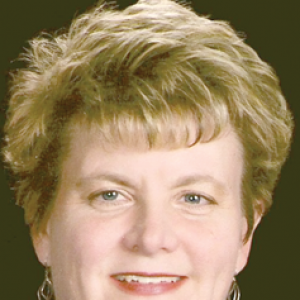With its founders and researchers, “united in free markets and limited government,” the American Legislative Exchange Council (ALEC) has come out with results of two studies that show Montana is about middling when it comes to economic prospects and the performance of its governor. And, the authors make frequent points that one ranking might have a lot to do with another.
Montana Governor Steve Bullock scored but 3 of a possible 5 stars and ranked 24th among the 50 governors of the country in the first ever ALEC Governors ranking of the 2020 Laffer-ALEC Report on Economic Freedom. The scorecard ranks governors based on policy performance and result, as well as executive leadership before and after the start of the COVID-19 health crisis.
At the beginning of September the study ranked Montana as 48th in the number of COVID deaths per 1 million population… only Alaska, Wyoming and Hawaii had a ratio of fewer deaths. New York, New Jersey and Massachusetts had the most. Montana also had one of the lowest unemployment rates in the nation.
The ranking shows that good management and balanced budgets have significantly helped states like Texas, Georgia and South Dakota, the governors of which earned five stars.
In their Rich States Poor States ranking, Montana’s best score was 15th in economic performance. Montana comes in 33rd in projecting economic outlook — six levels higher than last year and the score shows an over-all upward trend from 43rd in 2015. Montana ranked 24th in terms of State Gross Domestic Product , 15th in Absolute Domestic Migration, and 18th in Non-Farm Payroll.
The Economic Outlook Ranking is a forecast based on 15 state policy variables. Each of these factors is influenced directly by state lawmakers through the legislative process, emphasized the authors. Generally speaking, states that spend less — especially on income transfer programs — and states that tax less — particularly on productive activities such as working or investing — experience higher growth rates than states that tax and spend more.
The authors of the studies include Jonathan Williams, ALEC Chief Economist and Executive Vice President of Policy, who founded ALEC Center for State Fiscal Reform in 2011. He co-authors Rich States, Poor States: ALEC-Laffer Economic State Competitiveness Index with Reagan economist Dr. Arthur Laffer, Stephen Moore and Bill Meierling.
The numbers that help Montana’s standing include the impacts of not having a sales tax. The state is also bolstered by the fact that Montana has no estate or inheritance tax. The ranking is also bolstered by having a low level of debt at 4.6 percent, which taxpayers would otherwise have to be looking at repaying.
These positives are outweighed to a great extent by the fact that Montana’s other taxes are relatively onerous with rankings such as 33rd for top marginal personal income tax rate; 25th which reflects an increase of $18.12 per $1000 of income; or Top Marginal Corporate Income Tax Rate; 37th for Property Tax Burden which is $35.39 per $1000 of personal income. Montana ranks 32nd in terms of the number of public employees per 10,000, at 538.3.
And, Montana gets dinged as being dead-last, for not being a right-to-work state, and it sinks to 34th for not having tax expenditure limits.
Ranking first in economic performance is Utah, which has ranked in first place for 13 years in a row.
Utah is followed by Wyoming and then Idaho.
At the bottom is California, Illinois and New Jersey, Vermont, with New York dead last.
The authors said that they would like to see more states immolate the management policies of Utah, South Dakota or Wyoming. Among the common themes of the states at the top of their ranking is having balanced budgets and being “right to work states.”
So how has Utah maintained top ranking for 13 year? “A lot goes into that,” said Jonathan Williams, “They have kept a disciplined approach to budget and spending. They created a flat tax from a graduated income tax system, and they made innovative property tax reform… And, finally – something the bond agencies point to – they have prepared for the eventuality that the federal government may not keep up their matches on programs.”
“Another story is Wyoming which is No. 2 — moving up eight spots.” It is unique in that it is one of two sates that does not have a personal income nor a corporate tax.
Idaho is No. 3. Indiana is No. 4 and North Carolina is No. 5; both states ten years ago were “in the middle of the pack,” but because of cutting taxes and government reformed they have moved up.”
Ranking 6, 7, and 8 is Nevada, Florida and Tennessee – all states without personal income taxes.
New York has ranked 50th for seven years.
“It is interesting to see [Governor Andrew] Cuomo begging people to return to New York after years of chasing them away,” commented Williams.
Other low rankers are Vermont, Illinois, California, Minnesota, Hawaii, Minnesota and Maine – “states that have the biggest pension liability and the ones most lobbying for a federal bailout — a dangerous idea for federalism.”
Pointed out Steve Moore, there are states that want the federal government to grant them a total of some $750 billion to bail them out of deep debt. “It is unfair to states like Iowa, Idaho and Utah who have balanced their budgets.”
“The COVID crisis has “exposed the states who did not save for a rainy day,” said Jonathan Williams.
While it is noteworthy that many of the states that perform well are states without income taxes, Art Laffer pointed out that Washington state ranks 37th and it has no income tax – “so that tells you other things matter.”
“When you look at the bottom states, they have the highest tax rates, and then they are doubling down on that,” said Laffer, “….if you look at ten year averages it fits just like a glove on a hand.”
The Rich States Poor States study has been reported for 14 years, and over that time it’s become evident that “income tax rates do have a significantl affect, in fact it is indisputable at this point given what is happening ,” said Steve Moore..
“Looking at U-Haul data, shows the continuation of the trend,” he said, pointing out that there is a consistent migration out of the high-tax states like New York, New Jersey and Rhode Island.
Another example: “Illinois it is a catastrophe . It is so mismanaged … they have a massive unfunded liability in their pension benefits. … these states have put themselves in a big, big hole,” said Moore.
Art Laffer commented on the devolution of New Jersey which in 1965, with neither an income tax nor a sales tax was performing so well economically it was considered a “growth miracle.” But now, “They have flipped completely,” continued Laffer, pointing out that New Jersey has high gift and estate taxes and an inheritance tax.
Weighted down with unfunded government pension programs is one of the greatest problems confronting states that are underwater. “Unfunded pensions are future tax increases,” warned Laffer, and New Jersey has some of the highest unfunded pensions in the US. A prospective business person “sees a sees “a very toxic business environment waiting to hit in the future.”
Pointing out that it is not uncommon for income tax increases to be advanced with the argument that they bring income equality, Steve Moore interjected, “Guess what states that have the greatest income inequality like California, New York or New Jersey, have the highest income inequality.”


